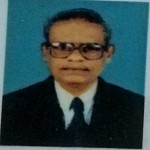exhibit of documents in court - IO transfered
 Advocate Vasundhara
(Querist) 10 July 2011
This query is : Resolved
Advocate Vasundhara
(Querist) 10 July 2011
This query is : Resolved
In a case of mine, First IO investigated the entire case, collected all the evidences, recorded witness statements etc. Then he got transfered and now retired. Now he is settled in USA. In the meantime second IO took over the case and just filed the Final Chargesheet in court.
The first IO never ever came to court for chief examination. So the second IO deposed in court and gave evidence. He exhibited the evidences, which were actually procured and investigated by first IO.
Sir/Madam, My question is
1. How can the second IO exhibit those documents not collected by him?
2. Should I file any objection now?
 Isaac Gabriel
(Expert) 10 July 2011
Isaac Gabriel
(Expert) 10 July 2011
The marking of evidences by the investigating officers are part and parcel of the enquiry and it could be exhibited whenever required irrespective of the fact whether it was done by different IOs.
filing objection is your right
 Advocate Vasundhara
(Querist) 10 July 2011
Advocate Vasundhara
(Querist) 10 July 2011
Thanks Gabriel sir for the reply,
Sir my doubt is
1. How can the second IO, who never know anything about the evidences collected by first IO, depose before judge and give evidence about them?
2. In cross examination of the second IO, How can I ask specific questions about those evidences to him?

Guest
(Expert) 10 July 2011
you can object to such documents when the PP makes the evidence and show your objections in the form that these are not the evidence collected by the present IO and objected on the basis of the executor
 SANJAY GUPTA
(Expert) 10 July 2011
SANJAY GUPTA
(Expert) 10 July 2011
Raise objections of the documents marked by the 2nd I.O. on behalf of the 1st I.O. proving documents before the court by 2nd I.O. is not barred but be careful n specific in your cross examination regarding the documents prooved by the 2nd i.o. on behalf of the 1st i.o.
 Advocate Vasundhara
(Querist) 10 July 2011
Advocate Vasundhara
(Querist) 10 July 2011
sirs,
should I file objection after cross examination of the second IO or before cross-examination?
 Ravikant Soni
(Expert) 10 July 2011
Ravikant Soni
(Expert) 10 July 2011
mere marking of exhibit does not dispense with proof of it's contents.
 Advocate Vasundhara
(Querist) 10 July 2011
Advocate Vasundhara
(Querist) 10 July 2011
sirs,
should I file objection after cross examination of the second IO or before cross-examination?
 Ravikant Soni
(Expert) 10 July 2011
Ravikant Soni
(Expert) 10 July 2011
you should object while exhibiting.
 Ravikant Soni
(Expert) 10 July 2011
Ravikant Soni
(Expert) 10 July 2011
Justice R.C. Lahoti pronounced a landmark judgment, in Sudir Engineering Company vs Nitco Roadways Ltd., which deals with the entire law relating to the marking of exhibits and tendering documents in evidence. The Bench has held that mere marking of an exhibit on a document does not dispense with the formal proof thereof. The relevant extracts from the judgment are reproduced hereinbelow;
(6) Let me now look at the law. Any document filed by either parly passes through three stages before it is held proved or disproved. These are : First stage : when the documents arc Filed by either party in the Court; these documents though on file, do not become part of the judicial record; Second stage: when the documents are tendered or produced m evidence by a party and the Court admits the documents in evidence. A .document admitted in evidence becomes a part of the judicial record of the case and constitutes evidenee. Third stage: the documents which are held 'proved, not proved or disproved' when the Court is called upon to apply its judicial mind by reference to Section 3 of the Evidence Act. Usually this stage arrives 31 the final hearing of the suit or proceeding.
(7) Order 13 Rule 4 sub-rule (1) of the Civil Procedure Code provides as under :- 4.( 1 ) ' Subject to the provisions of the next following sub-rule, there shall be endorsed on every document which has been admitted in evidence in the suit the following particulars, namely :- (a) the number and title of the suit, (h) the name of the person produced the documents, (c) the date on which it was produced, and, (d) a statement of its having been so admitted; and the endorsement shall be signed or initialled by the Judge. (2) xxx xxx xxx (Punjab & Haryana amendment) :- "Provided that where the Court is satisfied that the 'document, not endorsed in the manner laid down in the above rule, was in fact admitted in evidence, it shall treat the document as having been properly admitted in evidence unless non-compliance with this rule has resulted in miscarriage of justice." - Haryana Gaz., 11-6- 1974, Pt.III (L.S.) p.687." (underlining by me)
(8) I am firmly of the opinion that mere admission of document in evidence does not amount to its proof. 8.1Admission in evidence of a party's document may in specified cases exclude the right of opposite party to challenge its admissibility. The most prominent examples are when secondary evidence of a document within the meaning of Sections 63-65 of the Evidence Act is adduced without laying foundation for its admissibility or where a document not properly stamped is admitted in evidence attracting applicability of Section 36 of Stamp Act. 8.2 But the right of a party disputing the document to argue that the document was not proved will not he taken away merely because it had not objected to the admissibility of the document. The most instructive example is of a Will. It is a document required by law to he attested and its execution has to he proved in the manner contemplated by Section 68 of the Evidence Act read with Section 63 of the Succession Act. The party challenging the Will shall not be excluded from demonstrating at the final hearing that the execution of the Will, though exhibited, was not proved is statutorily requred.
(9) The law laid down by the Supreme Court in Sait Taraji Khimechand VS. Yelamarti Satvam is :- 'The mere marking of an exhibit does not dispense with the proof of docments'
(10) Two Division Benches of Lahore High Court Ferozchin VS. Nawnb Khan, Air 1928 Lahore 432 and Hari Singh VS. Firm Karam Chand, Air 1927 Lahore 115 have clearly held that the admission of documents under Order 13 Rule 4 Civil Procedure Code does not bind the parties and unproved documents cannot be regarded as proved nor do they become evidence in the case without formal proof
(11) I have looked into the provisions of Delhi High Court (Original Side) Rules 1967 also. Chapter Xiii Rule 3 provides for documents admitted in evidence being numbered in such manner as the Court may direct. 11.1 There is an Original Side Practice Direction (No.3 of 1974), which vide puras 6 and 7 provides :- 6. The Court Master of the Court shall lake charge of every document or object put in as an exhibit during the trial of any case and shall mark or label every exhibit with a letter or letters indicating the parly by whom the exhibit is put in or the witness by whom it is proved, and with a number, so than all exhibits put in by a party, or proved by a witness, arc numbered in one consecutive scries. 7. The Court Master .of the Court shall examine all documents produced or offered in evidence and bring any apparent insufficiency of the court fee or other stamps to the notice of the Judge for orders. He shall endorse all documents admitted in evidence and all documents rejected with the particulars required by law and sign or initial such endorsement. (underlining by me) 11.2 A bare reading of this Practice Direction shows that it is not artistically drafted 'Proved' as used in para 6. is nothing else except used loosely for 'put in' 'produced' or 'tendered'. After all the question of proof is not answered by Court during the statement of witnesses simultaneously with production of documents nor does the Court Master decide upon proof of documents. Para 7 makes it clear that endorsement file by the Court Master of exhibit number, on a document is 'admission in evidence' and not proof of a document.
(12) In Baldeo Sahai VS. Ram Chander & Ors., Air 1931 Lahore 546 it was said :- "There are two stages relating to documents. One is the stage when all the documents on which the parties rely are filed by them in Court. The next stage is when the documents 'MC. proved and formally tendered in evidence. It is at this later stage that the Court has to decide whether they should be admitted or rejected. If they are admitted and proved then the seal of the Court is put on them giving certain details laid down by law, otherwise the documents are resumed to the party who produced them with an endorsement thereon to that effect." A reading of the report shows that it was the practice of the Court to endorse the documents soon on their filing which practice was deprecated and hence slopped. The word "proved" has been used by the Division Bench in the sense of 'proposed to be proved' as is clear from its having been used Along with the word 'tendered' or "admitted" in evidence. The word proved has been loosely used for describing the stage after fling of the documents, when the Court would decide only whether they should be admitted or rejected. The Division Bench cannot be read as holding that the document is not to be endorsed with an Exhibit number unless and until proved. As staled in para 6 hereinabove, the stages of tendering/admitting/rejecting in evidence and holding a document proved - are two distinct and different stages, not one. They are respectively the second and third stages
(13) Admission of a document in evidence is not to be confused with proof of a document.
(14) When the Court is called upon to examine the admissibility of a document it concentrates only on the document. When called upon to form a judicial opinion whether a document has been proved, disproved or not proved the Court would look not at the document alone or only at the statement of the witness standing in the box; it would take into consideration probabilities of the case as emerging from the whole record. It could not have been intendment of any law, rule or practice direction to expect the Court applying its judicial mind to the entire record of the case, each lime a document was placed before it for being exhibited and form an opinion if it was proved before marking it as an exhibit.
(15) The marking of a document as an exhibit, be it in any manner whatsoever either by use of alphabets or by use of numbers, is only for the purpose of identification. While reading the record the parties and the Court should be able to know which was I he document before the winless when it was deposing. Absence of putting an endorsement for the purpose of identification no sooner a document is placed before a witness would cause serious confusion as one would be left simply guessing or wondering while was the document to which the witness was referring to which deposing. Endorsement of an exhibit number on a document has no relation with its proof. Neither the marking of an exhibit number can be postponed till the document has been held proved; nor the document can be held to have been proved merely because it has been marked as an exhibit.
(16) This makes the position of law clear. Any practise contrary to the above said statement of law has no sanctity and cannot be permitted to prevail.
(17) Every Court is free to regulate its own affairs within the framework of law. Chapter Xiii Rule 3 above said contemplates documents admitted in evidence being numbered in such manner as the Court may direct. I make it clear for this case and for all the cases coming up before me in future that the documents tendered and admitted in evidence shall be marked with numerical serial numbers, prefixed by Ex.P if filed by plaintiff or petitioner and prefixed by Ex.D if filed by defendant or respondent.
(18) Reverting back to the case before me, let the report of Notary Public be endorsed with an exhibit number by the Court Master.
 Ravikant Soni
(Expert) 10 July 2011
Ravikant Soni
(Expert) 10 July 2011
Decision on Questions Regarding Admissibility of Document in Evidence : The Appropriate Stage
Questions as to admissibility of a document in evidence are often raised during a trial. Most Courts while recording such objection tend to delay / postpone the decision as to the admissibilty of the document, at the stage of final arguments. The Supreme Court in Bipin Shantilal Panchal vs State Of Gujarat And Anr has laid down the procedure to be followed by the trial courts while dealing with such objections. The relevant extracts from the said judgment are reproduced hereinbelow;
"On that day the defence raised another objection regarding admissibility of another document. The trial judge heard elaborate arguments thereon and upheld the objection and consequently refused to admit that particular document. What the prosecution did at that stage was to proceed to the High Court against the said order and in the wake of that proceeding respondent filed an application on 9.11.2000, for enlarging him on bail on the strength of the order passed by this Court on 31.3.2000 (extracted above).
We are compelled to say that the trial judge should have shown more sensitivity by adopting all measures to accelerate the trial procedure in order to reach its finish within the time frame indicated by this Court in the order dated 31.3.2000 since he knew very well that under his orders an accused is continuing in jail as an under-trial for a record period of more than seven years. Now, we feel that the Additional Judge, whether the present incumbent or his predecessor, was not serious in complying with the directions issued by this Court, though the parties in the case have also contributed their share in bypassing the said direction.
As pointed out earlier, on different occasions the trial judge has chosen to decide questions of admissibility of documents or other items of evidence, as and when objections thereto were raised and then detailed orders were passed either upholding or overruling such objections. The worse part is that after passing the orders the trial court waited for days and weeks for the concerned parties to go before the higher courts for the purpose of challenging such interlocutory orders.
It is an archaic practice that during the evidence collecting stage, whenever any objection is raised regarding admissibility of any material in evidence the court does not proceed further without passing order on such objection. But the fall out of the above practice is this: Suppose the trial court, in a case, upholds a particular objection and excludes the material from being admitted in evidence and then proceeds with the trial and disposes of the case finally. If the appellate or revisional court, when the same question is re-canvassed, could take a different view on the admissibility of that material in such cases the appellate court would be deprived of the benefit of that evidence, because that was not put on record by the trial court. In such a situation the higher court may have to send the case back to the trial court for recording that evidence and then to dispose of the case afresh. Why should the trial prolong like that unnecessarily on account of practices created by ourselves. Such practices, when realised through the course of long period to be hindrances which impede steady and swift progress of trial proceedings, must be recast or re-moulded to give way for better substitutes which would help acceleration of trial proceedings.
When so recast, the practice which can be a better substitute is this: Whenever an objection is raised during evidence taking stage regarding the admissibility of any material or item of oral evidence the trial court can make a note of such objection and mark the objected document tentatively as an exhibit in the case (or record the objected part of the oral evidence) subject to such objections to be decided at the last stage in the final judgment. If the court finds at the final stage that the objection so raised is sustainable the judge or magistrate can keep such evidence excluded from consideration. In our view there is no illegality in adopting such a course. (However, we make it clear that if the objection relates to deficiency of stamp duty of a document the court has to decide the objection before proceeding further. For all other objections the procedure suggested above can be followed.)
The above procedure, if followed, will have two advantages. First is that the time in the trial court, during evidence taking stage, would not be wasted on account of raising such objections and the court can continue to examine the witnesses. The witnesses need not wait for long hours, if not days. Second is that the superior court, when the same objection is re-canvassed and reconsidered in appeal or revision against the final judgment of the trial court, can determine the correctness of the view taken by the trial court regarding that objection, without bothering to remit the case to the trial court again for fresh disposal. We may also point out that this measure would not cause any prejudice to the parties to the litigation and would not add to their misery or expenses.
We, therefore, make the above as a procedure to be followed by the trial courts whenever an objection is raised regarding the admissibility of any material or any item of oral evidence.
 Advocate Vasundhara
(Querist) 10 July 2011
Advocate Vasundhara
(Querist) 10 July 2011
I did not object, when it was exhibited and marked. Now the case is at stage of cross examination of the second IO.
Now can I file objection petition?
 Rajarshi Bhowmik
(Expert) 11 July 2011
Rajarshi Bhowmik
(Expert) 11 July 2011
First think has to be seen which documents got exhibited. The second I.O. can only identify the hand writing, signature of the first I.O. Now the thing has to be consider what sorts of document you are talking about. In case of making objection I think there also the status of documents needs to be considered. If you consider that you can shake the second I.O in cross examination and can make the prosecution case clumsy I think you have done enough. Also note exhibiting of documents does not mean it has passed the quantum of genuineness. rather it means That Court will consider those documents to pronounce its verdict. But if you still want to make objection you can file a writ petition before The HON'BLE high court u/a 226 or before the SUPREME COUT u/a 32
 prashant pundhir
(Expert) 11 July 2011
prashant pundhir
(Expert) 11 July 2011
I am unable to understand that what you want to get by objection ? If you are from the side of prosecution,be silent and if from defence,let it may come in cross .Although the second IO has no power to exhibit the evidences and statements not collected by him .
 Advocate Rajkumarlaxman
(Expert) 11 July 2011
Advocate Rajkumarlaxman
(Expert) 11 July 2011
though as suggested by experts your objection is must and whether it may be 2nd IO you can achallenge the same and above all the main intention should not be pressed on his giving evidence [2nd IO] as that cannot be denied . deny the contents and make the things right for you in th objections. donot go beating around the bush on the point of 1st and 2nd IO . immaterails of what they state try to make your case strong on the point which turns positive to you. Only the denial that the first IO never ever came to court for chief examination. So the second IO deposed in court and gave evidence. He exhibited the evidences, which were actually procured and investigated by first IO will and is not enough. go into the details of the contents.
 Advocate Vasundhara
(Querist) 11 July 2011
Advocate Vasundhara
(Querist) 11 July 2011
Thanks for your replies sir.
Sir, I am still confused to take a decision between the below:
1. File objection petition now, ie before the cross examination of second IO.
2. File objection petition during the cross examination of the second IO.
3. Dont file objection petition, just bring the issue during the cross exam of the second IO and prove it to judge that the second IO should not have exhibited the documents not collected by him. And request the judge to de-exhibit those documents.
 Advocate Vasundhara
(Querist) 10 July 2011
This query is : Resolved
Advocate Vasundhara
(Querist) 10 July 2011
This query is : Resolved
 Advocate Vasundhara
(Querist) 10 July 2011
Advocate Vasundhara
(Querist) 10 July 2011
 Guest
(Expert) 10 July 2011
Guest
(Expert) 10 July 2011
 Advocate Vasundhara
(Querist) 10 July 2011
Advocate Vasundhara
(Querist) 10 July 2011
 Advocate Vasundhara
(Querist) 10 July 2011
Advocate Vasundhara
(Querist) 10 July 2011
 Advocate Vasundhara
(Querist) 10 July 2011
Advocate Vasundhara
(Querist) 10 July 2011
 Advocate Vasundhara
(Querist) 11 July 2011
Advocate Vasundhara
(Querist) 11 July 2011
